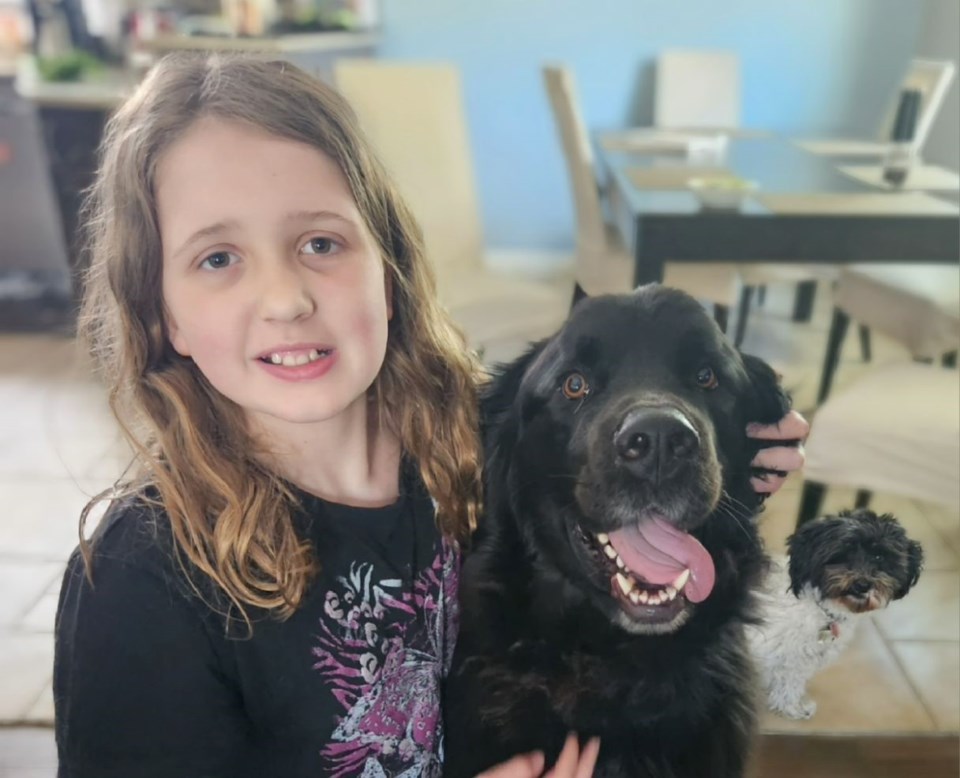ESTEVAN - Crystal Mack is pleased with how her family handled recent contact with a rabid bat in their yard, and hopes that other people take steps to ensure their pets are safe.
Mack recalled seeing a bat on a fence at the family's property in Estevan on May 5, but they left it alone.
"We decided that we would give it some time because we don't really know anything about bats, and they're wild animals. And he appeared to have left within a few hours," she said in an interview with the Mercury and SaskToday.
The bat eventually left, but Mack believes it might have gone into a tree in their yard.
Three days later, on May 8, her daughter Emily Schott was playing with one of their dogs Cola in their backyard. While they were running around, the dog stepped on the bat, and the flying mammal made what Mack called "a shrieked, hiss sound". Emily came inside and was worried about both Cola and the bat.
While Mack was making phone calls, she was directed to a rabies hotline, and she spoke with the Rabies Risk Assessment veterinarian, who told Mack to safely collect the bat without touching it, and to send it to the Prairie Animal Health Centre in Estevan the next morning, so it could be sent to Lethbridge, Alta., for testing. Mack's partner Mark Schott safely captured the animal.
They were also encouraged to revaccinate Cola, whose vaccinations were up to date, but Cola still receive a booster. While Cola was getting his shot, the Rabies Risk Assessment veterinarian called on May 10 to confirm the rabies diagnosis for the bat.
The family's other dog had just had his yearly exam, so both canines were fine.
"We didn't have to quarantine or anything, so they should be good. They don't have any official observation period or quarantine. We just have to watch to make sure nothing weird goes on," said Mack.
Nobody in the family touched the bat, but Emily had been running around in close proximity to where the bat was, and after talking to Public Health, she was given a series of shots to be on the safe side. She handled it very well, Mack said, and didn't cry or complain at all.
On May 15, Emily received five shots. Another came on May 18, and she will get one more on each of May 22 and 29.
The family had never seen a bat in their yard before, and Mack doesn't know of a rabies case occurring in Estevan before.
She was pleased with how her family handled the situation, and she also praised the Prairie Animal Health Centre for their promptness in not only sending off the bat but getting Cola in for an updated booster, the Rabies Risk Assessment Agency, Public Health and others.
"The nurses were very kind and understanding considering she's … 10," said Schott. "Everyone we dealt with was very, very helpful."
When she talked with Public Health, they were very understanding.
"The thing with the bat was if it didn't make a noise, we wouldn't have even known he was there, because he was so little. And then I looked at the dog's paws, and I didn't see any wound or anything that looked like a bit, but then they told me that because the teeth are so small, the dogs might not have even felt it, and we wouldn't be able to see a bite anyways," said Mack.
She urged people to make sure their pets are up to date with their vaccines. Wild bats are great for mosquito control, she said, but people and pets should keep at a safe distance. If there is ever a question about potential contact with a rabid animal, Mack encouraged them to reach out to Saskatchewan's Rabies Response Program and follow their recommendations.
"If the advice is to get the rabies vaccine, then do so because rabies is basically 100 per cent fatal by the time symptoms appear," she said.
There is no way to determine if a bat has rabies by simply looking at it; the disease can only be confirmed in a laboratory. A bat that is unable to fly and easily approached could very well be sick.




